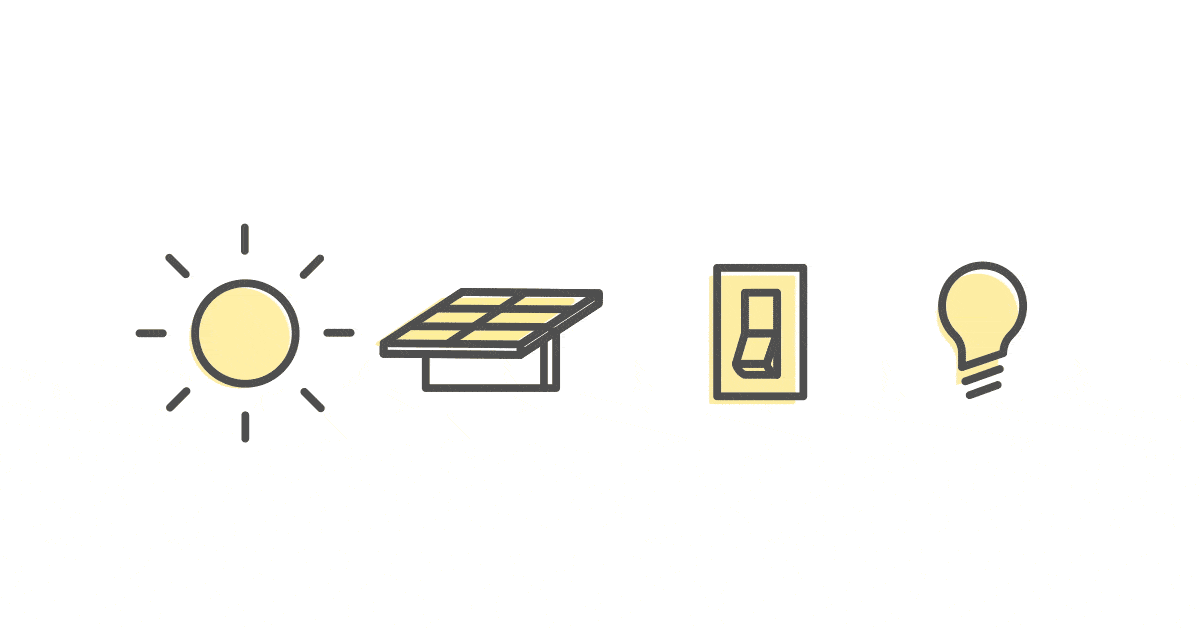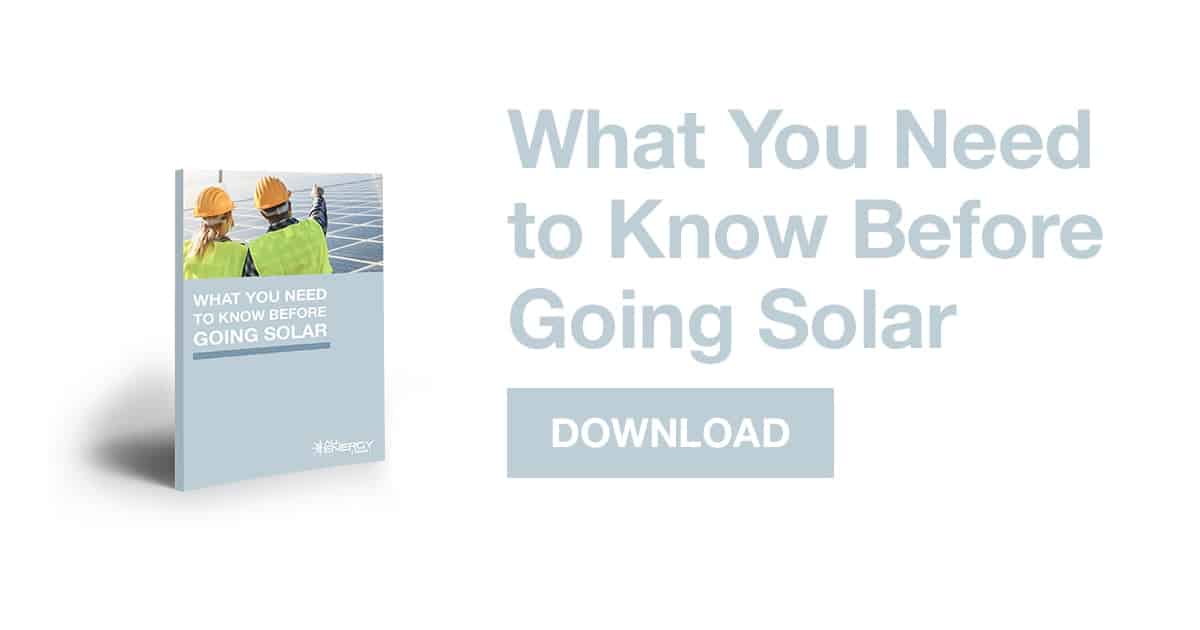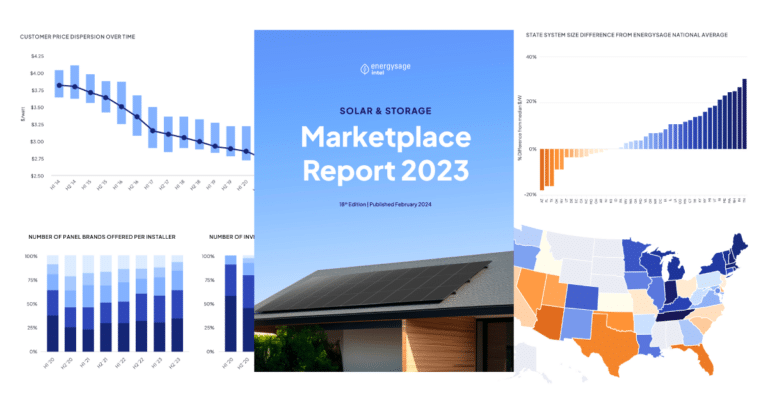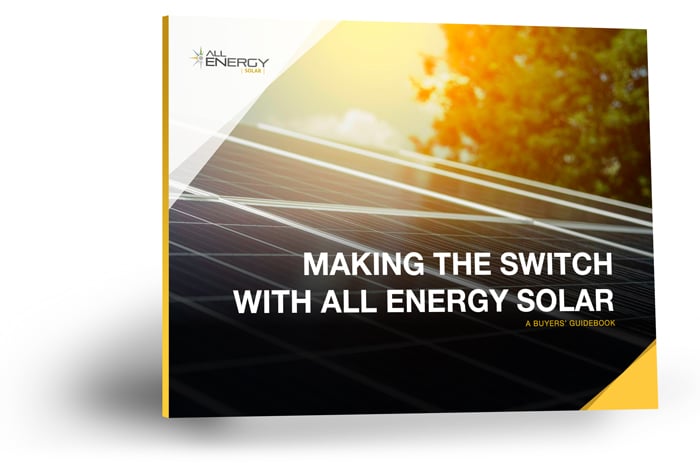Most of us have a general idea of how solar works, but what is the actual process for sunlight to be converted into usable electricity? Here’s a brief review of that process.
Sunlight activates the panels
Solar photovoltaic (PV) panels are constructed of lightweight metal frames, a glass casing coated in a unique film, silicon cells, and wires. Panels are connected in a network referred to as a solar array. Solar arrays are typically placed on a rooftop or large open area with optimal exposure to the sun. Each panel absorbs the sunlight during the daytime hours, activating the panel’s energy-producing capability.
Solar cells produce an electric current
Each photovoltaic panel contains a thin semiconductor wafer built from two layers of silicon. The first layer is a positive charge, and the second is a negative charge, working together to form an electric field. When the sun’s light hits the solar panel, electrons are produced and released from atoms within the semiconductor. Those electrons are activated by the electric field surrounding the semiconductor wafer resulting in an electrical current.
Electricity is converted into usable energy
Solar panels can quickly and efficiently convert sunlight into direct current (DC) electricity. Unfortunately, DC electricity is not used to power typical homes and businesses, so the electricity must first be converted into alternating current (AC) electricity to be used as an energy source. To make the relatively easy conversion from DC to AC, your solar array will require either a single inverter or a series of micro-inverters connected to the back of your panels.
Energy to power your home or business
The electricity converted by your inverter is then connected to your electrical system through your electrical panel and distributed throughout your home or business to meet the power demands of your electric appliances and equipment.
Net metering or battery storage
On cloudy days or at night, your panels may be unable to capture enough sunlight to meet the electric needs of your home or business. In this case, you’ll need to pull energy from your existing power grid or your battery storage system if you have one. Conversely, your consumption may be low in the middle of the day, but your panels’ production may be extremely high. In this case, the surplus energy your panels produce is fed first to a battery storage system (if you have one), then directly back to the power grid. A metering system connected to the grid tracks the flow of electricity in both directions, and your utility company will provide you credit for any excess electric power you send back to the grid. This process is known as net metering.
To learn more about how your business can implement a peak shave strategy and reduce your business’s operating costs through readily available, renewable solar energy, contact an All-Energy solar representative.
Download our eBook, What You Need to Know Before Going Solar, to get a breakdown of the steps you’ll need to take in your search for the perfect solar installer.



